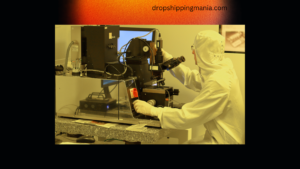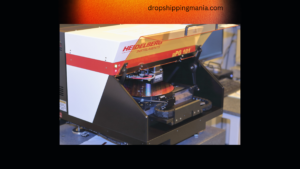Nanotechnology
When you hear the word “nanotechnology,” what comes to mind? If you’re like most people, you probably think of something small. Really small. And you wouldn’t be wrong. Nanotechnology is the study and application of extremely small things—so small that they can only seen with a microscope. This technology is used in a variety of industries, from medicine to manufacturing, and it has the potential to change the way we live and work. In this blog post, we will explore nanotechnology and its potential implications for the future. From medical applications to manufacturing, read on to learn more about this fascinating technology.
 width=”300″ height=”169″ />
width=”300″ height=”169″ />
Who invented Nanotechnology?
Nanotechnology is a field of science that deals with the manipulation of matter on an atomic and molecular scale. It was first coined as a term by Japanese physicist Norio Taniguchi in 1974, although the concept of nanotechnology had been around long before that.
The earliest documented use of nanotechnology dates back to 1959, when Richard Feynman gave a talk at Caltech entitled “There’s Plenty of Room at the Bottom”. In this talk, he described the possibility of creating smaller devices than were possible at the time, down to the atomic level. This sparked the imaginations of scientists and engineers worldwide, and laid the groundwork for what would eventually become nanotechnology.
Since then, there have been many advances in nanotechnology, with new applications being developed all the time. Today, nanotechnology is used in a wide variety of fields including medicine, electronics, energy storage, and more. The potential for nanotechnology is vast, and it promises to change our world in ways we can only imagine.
 width=”300″ height=”169″ />
width=”300″ height=”169″ />
What does nanotechnology do?
Nanotechnology has the potential to revolutionize the way we live, work, and play. It is already being used in a wide range of applications such as medicine, energy, vehicles, and manufacturing.
Nanotechnology is the manipulation of matter on an atomic and small scale. This means that it can use to create materials and devices with extremely small dimensions—nanometers or one billionth of a meter. Because nanomaterials can have unique properties, they have the potential to be used in a variety of ways that are not possible with existing technology.
For example, nanomedicine is the use of nanotechnology for diagnosis, treatment, and prevention of disease. Nanoparticles can designed to target specific cells or tissues and deliver drugs directly to them. This could potentially reduce side effects and make treatments more effective.
In the area of energy, nanotechnology is used to develop solar cells that are more efficient at converting sunlight into electricity. Additionally, researchers are working on developing new battery technologies that could store more energy and charge faster.
In transportation, nanotechnology is used to create lighter and stronger materials for use in cars and airplanes. This could lead to vehicles that use less fuel and emit fewer greenhouse gases.
And in manufacturing, nanotechnology is being used to create self-cleaning surfaces, stronger and lighter materials, and products with novel textures and colors.
Does Nanotechnology exist in real life?
Yes, it exists in real life and is used more and more each day. This technology involves the manipulation of matter on an atomic or molecular level to create materials with unique properties. Nanotechnology is already use in a variety of industries, including healthcare, electronics, energy, and transportation.
What are uses of Nanotechnology?
There are many potential uses for nanotechnology, including in the fields of medicine, energy production, and environmental cleanup. In medicine, nanotechnology could used to create more effective and targeted drugs, as well as to develop new methods for delivering those drugs to patients. Nanotechnology could also used to create more efficient solar panels and cells, which would help to reduce our reliance on fossil fuels. Additionally, nanotechnology could used to develop new materials that are stronger and lighter than existing materials, which could have a wide range of applications in industry. Finally, nanotechnology could used to clean up pollution and contamination, by developing new methods for removing contaminants from water or soil.
 width=”300″ height=”169″ />
width=”300″ height=”169″ />
How does Nanotechnology work ?
It is the study and use of structures that are smaller than 100 nanometers. A human hair, for example, is about 80,000 nanometers in diameter. Nanotechnology is the creation of devices and materials that have novel properties and functions because of their small size.
At the nanoscale, matter exhibits unique physical and chemical properties that are different from those at the macroscale. For example, nanoparticles have a large surface area-to-volume ratio. This means that they have a large number of atoms exposed on their surface, which makes them more reactive than larger particles. Nanoparticles also have quantum effects, which means they can exhibit wave-like behavior.
There are many potential applications for nanotechnology. One area of research is in developing new materials with unique properties, such as superstrong or self-cleaning materials. Another area is in creating new medical treatments, such as targeted drug delivery or cancer therapies. Nanoengineered devices could also use to clean up environmental pollutants or generate energy from renewable sources.
What diseases can Nanotechnology cure?
It has the potential to revolutionize medicine and there are many diseases that could cure with nanotechnology. One example is cancer, as nanotechnology can use to target and destroy cancer cells while leaving healthy cells unharmed. Nanotechnology can also use to create new drugs and treatments for diseases such as Alzheimer’s and Parkinson’s. Additionally, nanotechnology can use to create artificial organs and tissues, which could use to change damaged or diseased ones. Ultimately, the possibilities for nanotechnology in medicine are endless and it has the potential to drastically improve our health and quality of life.
What are the 10 applications of Nanotechnology?
1. It can used to create stronger and lighter materials for use in airplanes, cars, and other vehicles.
2. Nanotechnology can used to create more efficient solar cells and other energy-producing devices.
3. It can used to create more effective medical treatments, including select drug delivery and cancer cure.
4. Nanotechnology can used to improve food production and food safety.
5. It can used to create new fabrics and textiles with improved properties such as stain resistance and wrinkle-free finishes.
6. Nanotechnology can use to create better cosmetics, sunblock , and cleaning products.
7. It can help clean up dangerous waste sites and toxin in water supplies.
8. Nanotechnology can improve communication technologies such as cell phones and computers.
9. It can enhance security by creating new types of sensors and identification devices.
How is Nanotechnology used in medicine?
This is use in a number of ways to improve medical care. One example is the development of nanoscale devices that can implant in the body to help monitor vital signs or deliver drugs directly to cancer cells. It is also being use to create new materials for use in pegleg devices and artificial organs. In addition, nanotechnology is being use to develop new diagnostic tools and treatments for a variety of diseases.
What is the latest products using Nanotechnology?
One of the products to use nanotechnology is the Samsung Galaxy S8. This phone uses this technology in its display, which makes it more resistant to scratches and fingerprints. Nanotechnology is also use in the phone’s camera, which gives it better low-light performance.
Another product that uses nanotechnology is the Dyson Airblade Tap. This is a hand dryer that uses nanotechnology to produce a stream of air that can dry your hands in just 12 seconds. The Airblade Tap also has a fitted water filter that removes 99.9% of germs from the water before it dries your hands.
Thisis also being use in medical applications. One example is the NanoZyme Biosensor, which is a handheld device that can detect very small amounts of germs in blood or other body fluids. This biosensor could use to quickly diagnose infections, or to monitor patients for bacterial infections after surgery.
These are just a few examples of the many products that are using nanotechnology. As this technology continues to develop, we can expect to see even more products that make use of its unique properties.
Which disease is a major focus for Nanotechnology?
This is applied to a variety of diseases, but there are a few that are a major focus. Cancer, Alzheimer’s disease, and HIV/AIDS are all areas where nanotechnology is use or studied in the hopes of finding a cure.
Cancer is one of the leading causes of death worldwide, so it’s no surprise that it’s a major focus for nanotechnology. Researchers are working on ways to use nanoparticles to target and destroy cancer cells while leaving healthy cells all right. This could lead to more effective and less toxic cancer treatments.
Alzheimer’s disease is another area of research for this . There are currently no effective treatments for this ongoing brain disorder, but it could offer new hope. Scientists are studying ways to use nanoparticles to deliver drugs directly to the brain cells affected by Alzheimer’s. This could slow down or even stop the growing of the disease.
HIV/AIDS is another major focus for nanotechnology research. Currently, there is no cure for HIV/AIDS, but antiretroviral drugs can keep the virus under control and allow people with HIV to live long, healthy lives. However, these drugs are expensive and have side effects that can be difficult to bear . It could offer a way to deliver these drugs more usefully and with fewer side effects.
If you need to information about some technology then visit this link


